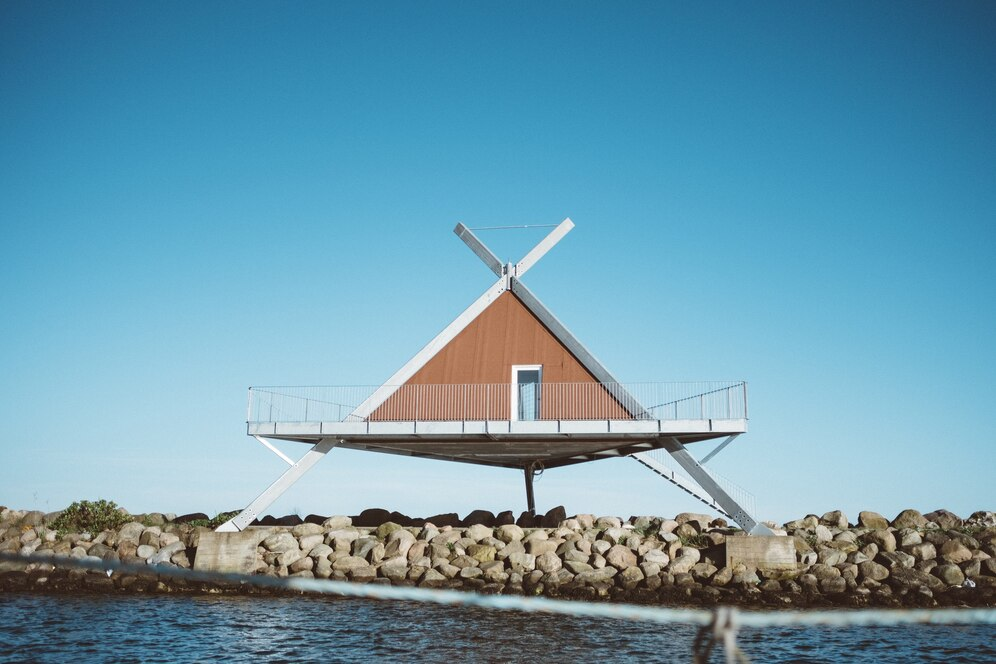If you’re designing for the coast, you’re designing for reality. Sweltering humidity. Salty winds. Unforgiving sun. And when the ocean decides to stir, your building had better hold up. That’s why some of the smartest architectural minds today are merging environmental resilience with something far more elegant: parametric design.
This isn’t just about aesthetics. It’s about survival, with style. Across the tropics, parametric structures are rising in harmony with the environment, thanks to material intelligence and climate data baked into the design process. Weatherproof, low-maintenance materials have quickly moved from optional to essential. One of the quiet heroes? Composite decking. It’s not flashy. But it lasts, performs, and looks good doing it.
The thing is, even the most advanced material needs care. That’s where cleaning composite decking comes in. It’s a detail that, when overlooked, undermines the entire system. In high-salinity, high-wear coastal environments, a simple cleaning routine helps extend the life and preserve the beauty of outdoor surfaces that hold everything together.
When Form Follows Data
Parametric design is more than a buzzword; it’s an upgrade to how we think. Architects are feeding in site data, humidity, wind load, UV index, salinity, and letting algorithms help them shape not just the form of a building, but the function of every component.
Here’s where the real genius kicks in: materials are chosen not just for look or cost, but for performance over time. In coastal zones, that performance gets stress-tested by nature every day. Traditional materials warp. They fade. They rot. Composite decking, on the other hand, stays calm. Engineered to handle salt, sun, and storm, it can be modeled directly into design software with performance metrics attached. Less guesswork. More foresight.
For the architect, this unlocks freedom. For the developer, it protects investment. For the resident, it means less upkeep and more time enjoying the view.

The Coast Is a Lab, And the Results Are In
The most progressive beachfront projects aren’t happening by accident. In Macau, Bali, and the Caribbean, architects are raising structures that defy weather and expectation. They’re marrying soft, organic geometry with tough materials that won’t give way when the weather turns.
Take the outdoor walkways and pool decks of boutique resorts across the Bahamas. Composite decking is standard now, not just for how it looks, but how it performs. Cleaning composite decking in these locations is as routine as sweeping the sand. No chemicals. No drama. Just rinse and reset. It’s that simplicity that makes it essential.
These surfaces take a beating: foot traffic, salt spray, UV rays. And yet, day after day, they hold up. That’s the point. Resilience isn’t a bonus feature. It’s the baseline.
Material Evolution for the Age of Extremes
Let’s not sugarcoat it: tropical climates are brutal. Salt eats metal. Sun bleaches wood. Mold loves moisture. So why are so many designers still specifying materials better suited to dry, inland suburbs?
Composite decking is built for battle. Made from a blend of recycled plastics and reclaimed wood fiber, it doesn’t absorb moisture. It doesn’t splinter. It doesn’t rot. And crucially, it doesn’t need constant attention. Regular cleaning? Sure. But it won’t punish you for missing a weekend.
Because it performs predictably, it fits perfectly into parametric workflows. You can model lifespan. You can simulate surface temperatures. You can even map out wear patterns. That’s architectural control that feels a lot like confidence.
Sustainability Isn’t a Trend, It’s a Mandate
More than ever, material choices are under scrutiny. Architects aren’t just building structures; they’re building narratives. Is your building sustainable? Is it efficient? Is it future-proof?
Composite decking checks more boxes than most. It reduces deforestation. It’s often made from post-consumer materials. And it doesn’t require paints or sealants that pollute coastal ecosystems. Even its end-of-life story is cleaner: several suppliers offer recycling programs.
From a maintenance perspective, cleaning composite decking with basic soap and water keeps surfaces looking fresh for years, with no sanding, staining, or toxic runoffs involved. That simplicity supports sustainability in a real, tangible way.
Parametric models can even calculate lifecycle emissions and compare composite decking to timber, stone, or tile alternatives. Spoiler: composite often wins on all fronts.
Texture That Speaks, Performance That Lasts
The function is great. But in architecture, we want soul too. That’s the beauty of composite decking; it isn’t just tough, it’s textured. Designers can choose finishes that mimic driftwood, volcanic ash, even sun-bleached cedar. It looks coastal. It feels coastal. But it won’t flake, fade, or crack like the real thing.
This opens up creative possibilities. With parametric tools, you can algorithmically assign textures, build gradient patterns, or map how light interacts with the surface across different times of day. The deck becomes part of the story, not just a place to walk, but a visual and tactile feature that anchors the entire design. It’s no longer about surviving the coast. It’s about thriving there.
Weathering the Next 50 Years, With Precision
Storms are getting stronger. Seasons are shifting. Expectations are rising. The future of coastal design isn’t in guesswork. It’s in modeling, mapping, and materials that don’t quit.
Parametric architecture gives you the data. Composite decking gives you durability. Maintenance strategies like routine cleaning give you longevity. Put together, they build a blueprint for structures that can stand proudly at the water’s edge for decades.
This isn’t about the trend. It’s about trajectory. And in the world of coastal, tropical architecture, the path forward is clear: smarter tools, smarter materials, and smarter decisions.
Welcome to the new standard.


















Leave a comment